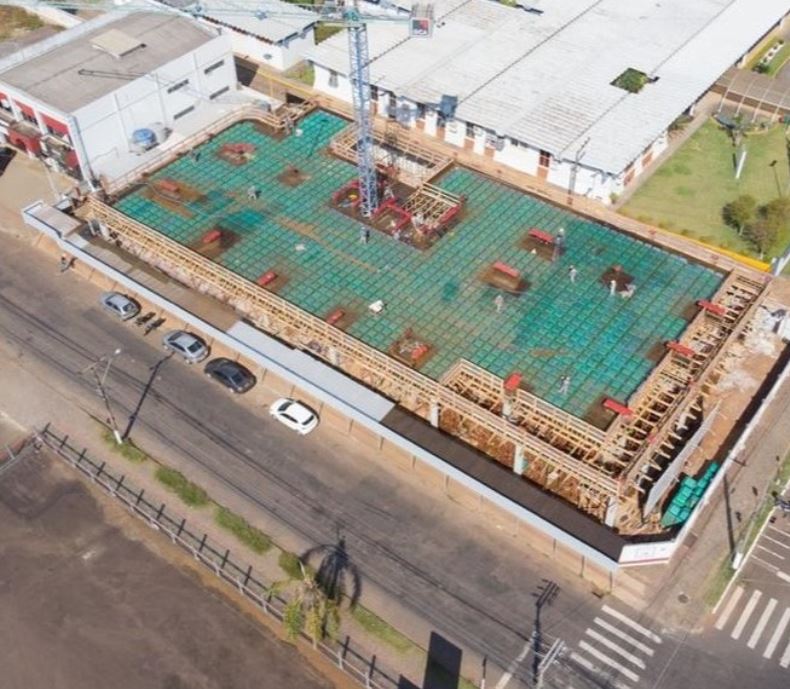Prestressed slabs are widely used in building and infrastructure projects. This structural solution is defined by the application of compressive stresses, either before or after the concrete is poured, using high-strength steel cables or wires. This technique is particularly advantageous for large-span slabs under heavy loads as it significantly enhances the stiffness of the structure, reducing the need for intermediate supports.
At the MHNET headquarters building, specific challenges were encountered due to the large floor dimensions and the inability to include expansion joints because of architectural limitations. In these scenarios, large concrete areas are subject to significant axial deformations caused by daily thermal variations. The primary consequence, if these stresses are not properly addressed in the structural design, is the formation and propagation of cracks in all concrete elements. The solution implemented was the application of prestressing, which is essential to mitigate these effects and maintain structural integrity.
The decision was made to use greased tendons, which offer multiple technical and operational advantages. Besides increasing rigidity and durability, this solution reduces the self-weight of the structure. These benefits not only enhance the performance and longevity of the construction but also promote construction and economic efficiency. Therefore, when designing structures subject to heavy loads and considerable spans, including greased tendons as prestressed elements proves to be a technically advantageous and effective option.

